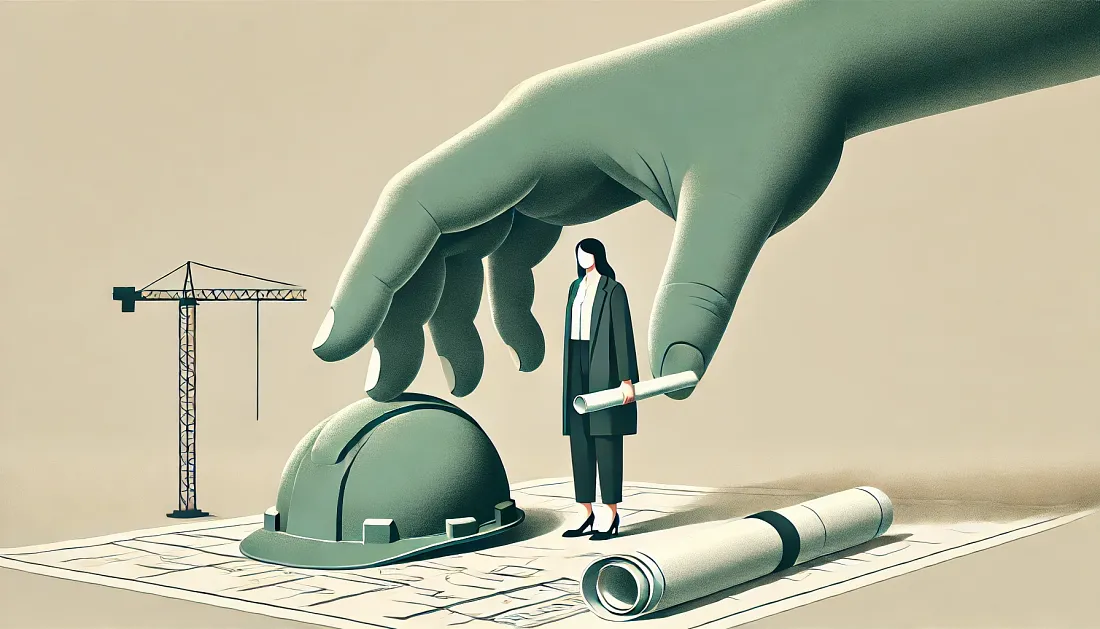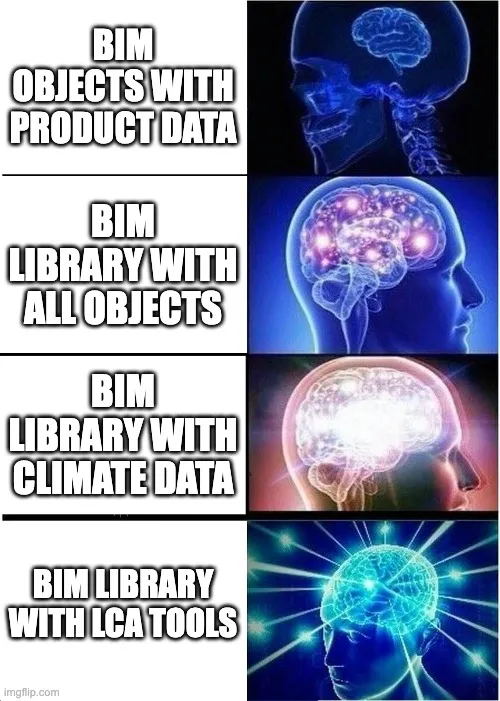Why a BIM Library With Embodied Carbon Data might be the Perfect Climate Nudge
 tl;dr: Most BIM objects (and the libraries which host them) lack sustainability data. Adding that data can push designers to make better decisions.
tl;dr: Most BIM objects (and the libraries which host them) lack sustainability data. Adding that data can push designers to make better decisions.

BIM Objects and Libraries: The Digital Backbone of Modern Construction
Building Information Modeling (BIM) was introduced a couple of decades ago as the technology that would revolutionise how we design and construct buildings.
At its core, BIM is a digital representation of physical and functional characteristics of a building. The individual building blocks of BIM models are known as BIM objects, which are virtual representations of products and materials used in construction. These objects contain vital data like technical specifications, dimensions, performance attributes, and more, allowing them to behave digitally in ways that mirror how they would in the real world.
BIM objects enable architects, engineers, and construction managers to simulate real-life conditions, test different design alternatives, and detect clashes in the project at any stage. This can drastically reduce errors, improve collaboration, and allow for better decision-making in real-time. BIM libraries, which house thousands of these digital objects, provide the essential resources for designers and builders to download, modify, and use in their projects.
However, while BIM objects have significantly streamlined design and construction workflows, there is a critical gap that must be addressed in 2024: the inclusion of sustainability metrics.

The Environmental Impact of the Construction Industry
The construction industry has long been one of the biggest contributors to climate change. It’s responsible for approximately 35% of global CO2 emissions and produces an enormous amount of waste that fills landfills. In a world increasingly focused on sustainable development, the need to reduce the construction industry’s carbon footprint has never been more urgent.
Digital technologies, particularly BIM, have an enormous opportunity to tackle this. With the ability to track every material, process, and component from design to end-of-life, BIM can drive more sustainable practices. Yet, without transparency in sustainability metrics such as embodied carbon, water usage, circularity potential, and health impacts, we’re missing the full potential of what digital construction can achieve.
What a “nudge” is
A “nudge” is a subtle push that encourages people to make better decisions without forcing them. In the context of sustainable construction, a BIM library integrated with embodied carbon data serves as a powerful nudge.
By embedding climate information directly into the design process, architects and engineers are gently encouraged to choose lower-carbon materials, making more sustainable choices the default option. This kind of nudge supports informed decision-making, helping the industry shift toward greener practices without disrupting established workflows.
Why BIM Libraries Need Sustainability Metrics
Imagine installing solar panels in the shade. You may have cutting-edge technology and the potential for energy savings, but without sunlight, the panels can’t perform as intended. Similarly, a BIM library without embodied carbon and sustainability data leaves designers and builders unable to harness the full potential of their projects, missing out on the opportunity to make informed, environmentally responsible decisions.
A BIM library in 2024 should not only provide geometrical and technical data but also include clear, transparent sustainability metrics for each object. This includes information like embodied carbon (the total greenhouse gases emitted to produce and transport materials), water usage, circularity (the potential for reuse or recycling), and health impacts (such as VOC emissions). Having this data available from the earliest design stages allows teams to make informed decisions that reduce environmental impact throughout the building lifecycle.
Integrating Sustainability at Every Stage of Design and Construction
The key advantage of having sustainability data embedded in BIM objects is that impact tracking becomes seamless across every phase of construction:
- Design Phase: Architects and designers can compare materials not only for aesthetics and performance but for carbon footprint and water use. Sustainable alternatives can be chosen early, avoiding costly redesigns later.
- Construction Phase: Builders can monitor the sustainability of materials in real-time, choosing methods that lower embodied carbon and reduce waste, such as prefabrication and material reuse.
- Operation & Maintenance: Facility managers can access data on the building’s operational carbon, allowing them to optimize energy use and reduce long-term environmental impact.
- End-of-Life: Knowing the circularity potential of materials enables better recycling or reuse, supporting the shift to a circular economy.
BIM Library Providers Must Lead the Way
Major BIM library platforms like BIMobject, NBS BIM Library, BIMSmith, and BIMstore play a critical role in the future of sustainable construction. These platforms would benefit their users and the climate by prioritising the addition of sustainability metrics to every BIM object, ensuring that environmental data is integrated into the core of digital building design.
Without this shift, the construction industry will struggle to meet global climate goals. On the other hand, embedding this data will empower every stakeholder, from designers to contractors, to make greener choices, ensuring that sustainability is considered at every decision point.
Where the data lives
At 2050 Materials, we recognize the need for reliable, accessible sustainability data in the digital design process. We don’t provide BIM software — we provide the data.
With our comprehensive material database, we integrate carbon, water, health, and circularity metrics seamlessly into BIM objects, giving the industry the tools it needs to drive climate transformation.
Let us help you fill the gap.
Related articles

Climate-Resilient Materials for the Built Environment: A Data-Centred Prime
As climate volatility intensifies, resilience metrics are fast becoming as critical as carbon data in material selection. This article outlines why adaptation is now a design imperative, how materials can be evaluated through a systems lens, and what KPIs project teams should demand. From self-healing concrete to fire-rated façades, we present a structured taxonomy of resilient materials, explain how to embed this intelligence into digital design workflows, and propose next steps for specification, benchmarking, and procurement.
Read more
The Most Interesting Low Carbon Products in Office Design
In this article and collection, we highlight 11 outstanding products that contribute to a lower carbon footprint in office design.
Read more
Top Low Carbon Building Boards: Performance, Benefits, and Use Cases
The building boards highlighted in this article and collection showcase low-carbon innovation in modern construction.
Read more